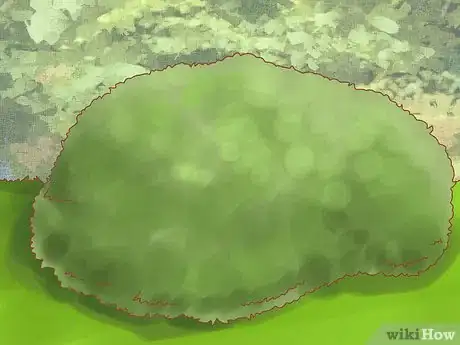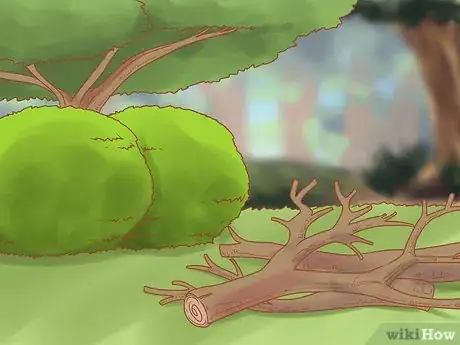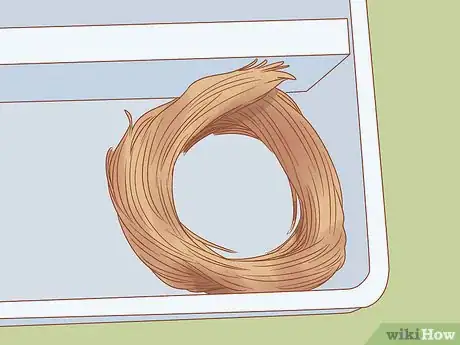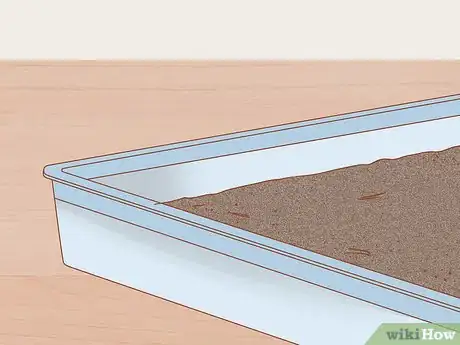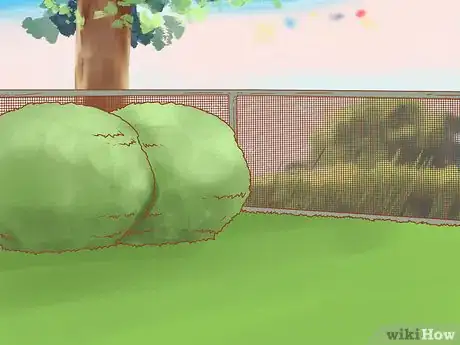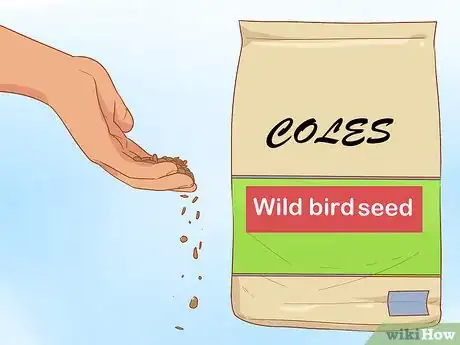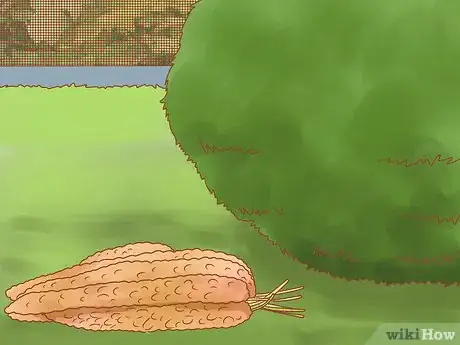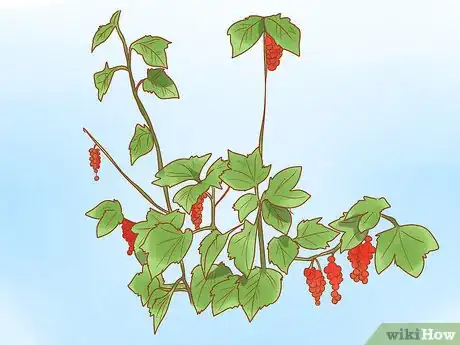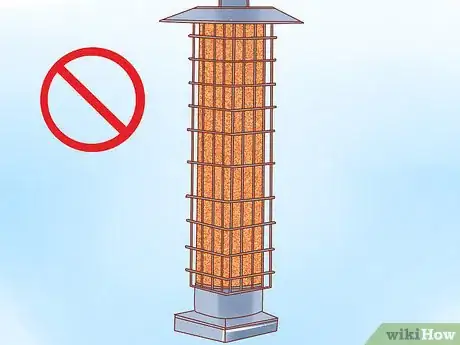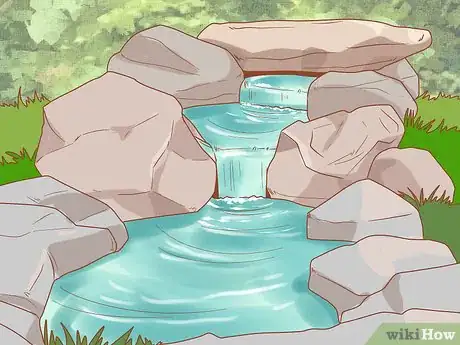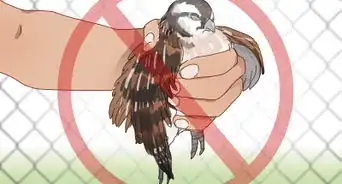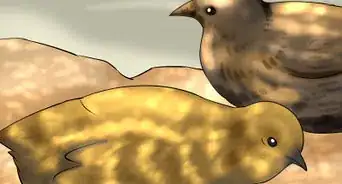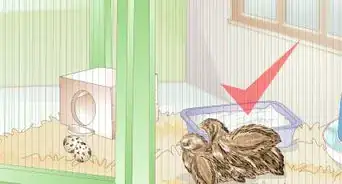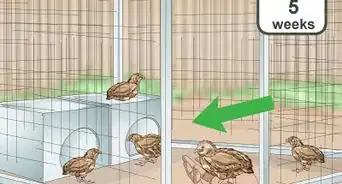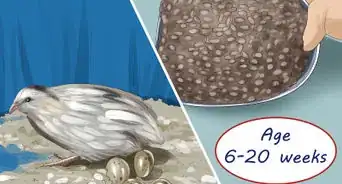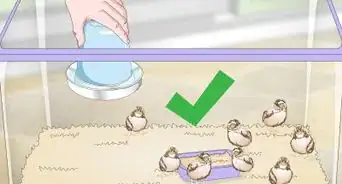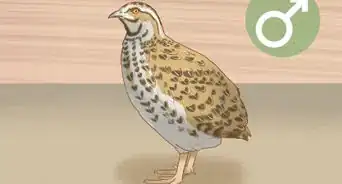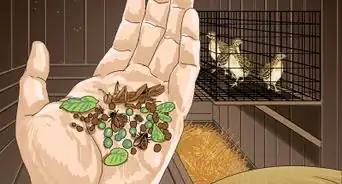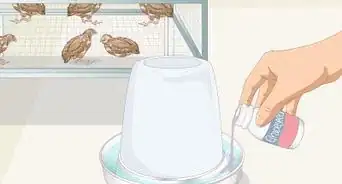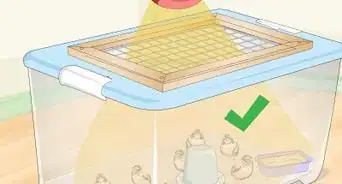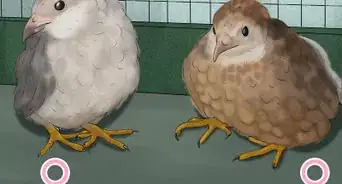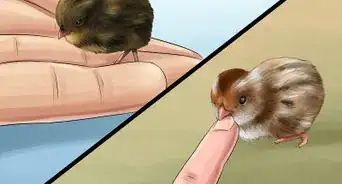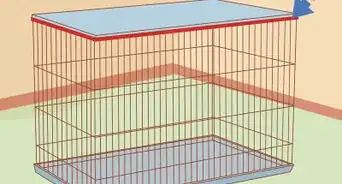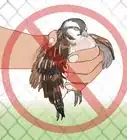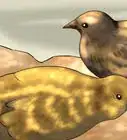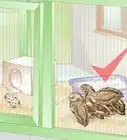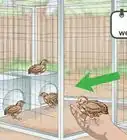This article was co-authored by wikiHow staff writer, Jessica Gibson, and Amy Harrison, a trusted member of wikiHow's volunteer community. Amy Harrison has over five years of experience working directly with poultry. She has worked on a rural chicken farm built around marketing free-range eggs, where she managed the care for the poultry year-round. She has experience breeding chickens and quail, caring for newborn poultry, handling their health issues, and managing their dietary needs.
There are 7 references cited in this article, which can be found at the bottom of the page.
wikiHow marks an article as reader-approved once it receives enough positive feedback. In this case, 94% of readers who voted found the article helpful, earning it our reader-approved status.
This article has been viewed 30,893 times.
Learn more...
If you love quail but can't seem to interest them in your yard, make a few simple yard changes. Start by planting ground cover and shrubs to create a welcoming habitat that will make quail feel secure. You should also give the quail access to shallow water and food, such as seeds, insects, and grains. Quail will enjoy your yard if they feel protected and nourished.
Steps
Making Your Yard Attractive to Quails
-
1Plant native plants instead of introduced species. Research plants that are native to your planting zone and choose native shrubs and trees that will attract quail. Native plants provide a protected place for quail to breed, roost, and nest. Many of the plants are also home to insects that the quail like to eat.[1]
- For example, if you live in Texas, you could plant black locust, eastern red cedar, and desert willow.
- For example, if you live in Arizona, try planting velvet and honey mesquite trees, catclaw, saltbush, and globe mallow.
-
2Grow dense ground cover to protect the quail. Leave grass and foliage in your space to mimic the quail's natural habitat. Quail can hide in the tall grass and the shrubbery makes a windbreak that protects the birds from the elements.[2]
- Quail love thickets, tangles, and brush piles, so don't clear these from the space.
Did You Know? A quail's natural habitat is made up of 10 to 60% woody cover, so brush is important in attracting quail.
Advertisement -
3Set out dry nesting material. Quail like to find an area where they can breed and raise their young. Provide dry straw, hay, grass, leaf litter, and twigs to encourage the quail to breed. Set these near the ground cover, so the quail feel protected.[3]
-
4Create a dry, dusty space for the quail to bathe. Quail roll in the dust to protect their feathers and remove parasites. The dust also acts like a bath. To make a bathing spot for the quail, mix a little dry sand into a space filled with dirt.[4]
- Consider placing a cover or tree near the bathing spot, so the spot doesn't become muddy if it rains.
-
5Arrange hollow logs or stumps in your space. Hollow logs make great hiding spots or places for the quail to nest and feed. Place a few hollow logs near the shrubbery and ground cover. This will encourage the quail to investigate the logs. You should also set out a stump or large piece of timber.[5]
- If you attract a flock of quail, the male leader will perch on the stump.
-
6Use fencing or shrubbery to secure the quail from predators. If you have livestock in the area, install high fencing to prevent them from wandering into the space where you're trying to attract quail. Otherwise, shrubbery can act as a fence to keep other predators away. It's also important to keep house pets out of the space since they'll frighten the quail away.[6]
- You should also avoid walking around the space because you could disturb the quail.
-
7Keep pets indoors. Quail are very fragile and easily-frightened birds that can be discouraged by unwanted animals in your garden, such as cats or dogs. Limit the sessions your household pets spend outside.
Feeding the Quails
-
1Set out wild bird seed and grains near the ground cover. Purchase wild bird seed and grain sorghum. Then scatter it near the shrubs and ground cover. The quail will be attracted to the food, but will be protected by the plants.
- You can find wild bird seed formulated for quail at most local pet stores or online.
-
2Place millet sprays in the shrubbery. You can buy millet seeds that are still attached to the stalk and insert them ground cover. The quail will be drawn to the millet and they'll be protected by the shrubbery while they're eating it.[7]
- Cowbirds and house sparrows also enjoy millet sprays.
-
3Plant extra food resources. Quail might be interested in herbs, vegetables, and berry bushes in your space, so consider planting these. Shrubs that produce food for quail include serviceberry, snowberry, huckleberry, blackberry, currant, and grape.[8]
- Quail also eat flowers and insects that are commonly found in gardens.
-
4Avoid using hanging bird feeders. Quail don't fly and they don't like to perch while they eat, so don't put food into bird feeders that hang from trees. If you still want to use a feeder, purchase one that sits just off of the ground and fill it with wild bird seed.
- Keep in mind that predators, such as house cats or rats, may be drawn to the quail as they gather near the ground feeders.
-
5Add a water source to your garden. Quail don't usually like to drink from raised bird baths, but they are attracted to shallow, low-lying water sources. If you don't have an artificial pond in your space, set out shallow bowls of water.[9]
- Quail will also be drawn to streams or rivers that they can drink from.
Community Q&A
-
QuestionHow can you tell a female and male quail apart?
 Amy HarrisonTop AnswererTypically, you look at their feathers and marking. Button and Californian quail are easy to tell a part due to their markings and plumage. Coturnix quail, however, can be sexed by checking their underside and pressing on their cloaca. Please refer to the wikiHow How to Determine the Sex of a Quail to learn more.
Amy HarrisonTop AnswererTypically, you look at their feathers and marking. Button and Californian quail are easy to tell a part due to their markings and plumage. Coturnix quail, however, can be sexed by checking their underside and pressing on their cloaca. Please refer to the wikiHow How to Determine the Sex of a Quail to learn more. -
QuestionI have thirty acres of wild habitat in the Hill Country. Should I introduce wild or pen raised quail to see if they will thrive?
 Amy HarrisonTop AnswererWild quail will thrive better in the wild compared to domesticated quail. This is due to their natural instincts to survive and repopulate. Domesticated quail have years of instinctual genes bred out of them, so may not thrive in open conditions.
Amy HarrisonTop AnswererWild quail will thrive better in the wild compared to domesticated quail. This is due to their natural instincts to survive and repopulate. Domesticated quail have years of instinctual genes bred out of them, so may not thrive in open conditions. -
QuestionWhat types of quail can you keep?
 Amy HarrisonTop AnswererCoturnix (or Japanese) and Button (or King) quail are the most popular breeds to keep. Depending on what purpose you'd like quail for, there are multiple breeds available. Gambel, California, Scaled and Mountain quail are a few other breeds that are less common.
Amy HarrisonTop AnswererCoturnix (or Japanese) and Button (or King) quail are the most popular breeds to keep. Depending on what purpose you'd like quail for, there are multiple breeds available. Gambel, California, Scaled and Mountain quail are a few other breeds that are less common.
Warnings
- While these additions to your garden can attract quail, they can also entice unwanted pests and dangerous wildlife, such as snakes, spiders, reptiles and amphibians.⧼thumbs_response⧽
Things You'll Need
- Wild bird seed or grain sorghum
- Millet spray
- Hollow logs
- Native plants
- Ground feeder, optional
References
- ↑ http://riosalado.audubon.org/birds/native-plants-attract-birds
- ↑ https://www.laspilitas.com/California_birds/Quail/California_Quail_in_your_garden.htm
- ↑ https://www.nrcs.usda.gov/Internet/FSE_PLANTMATERIALS/publications/flpmsjm7473.pdf
- ↑ https://www.nrcs.usda.gov/Internet/FSE_PLANTMATERIALS/publications/flpmsjm7473.pdf
- ↑ https://www.mdwfp.com/media/news/wildlife-hunting/creating-wildlife-habitat-in-your-own-backyard/
- ↑ https://www.uaex.edu/publications/pdf/MP506.pdf
- ↑ https://feederwatch.org/blog/try-something-different-spray-millet/
- ↑ https://www.birdwatchingdaily.com/beginners/attracting-birds/quail-plants-provide-food-cover/
- ↑ https://www.birdwatchingdaily.com/beginners/attracting-birds/quail-plants-provide-food-cover/
